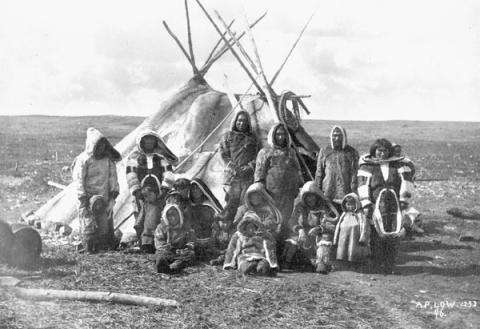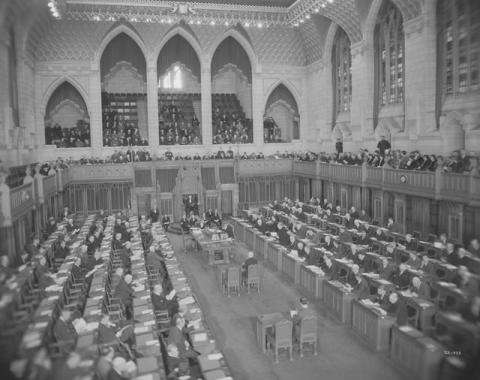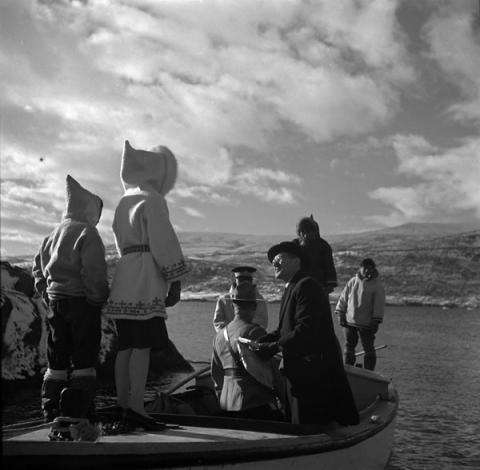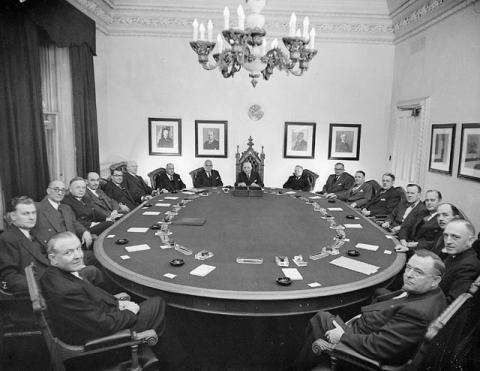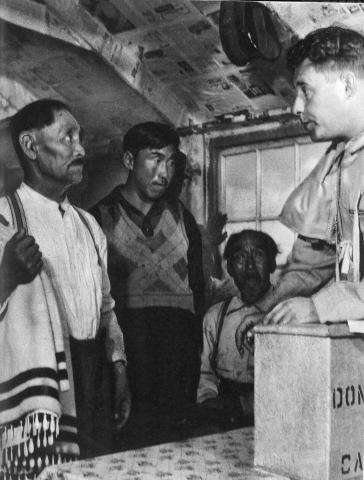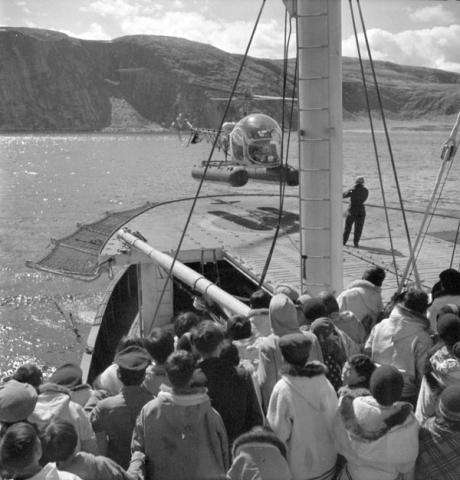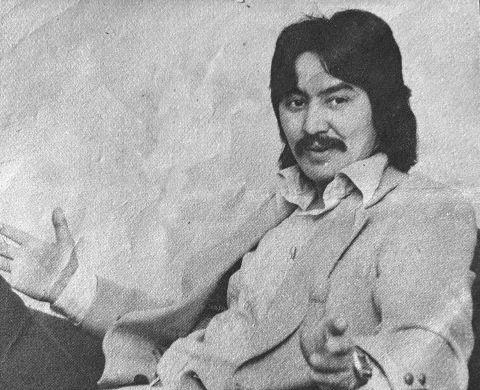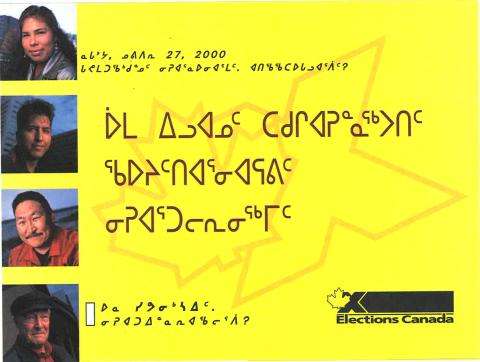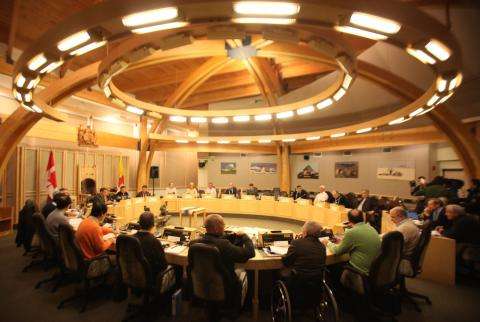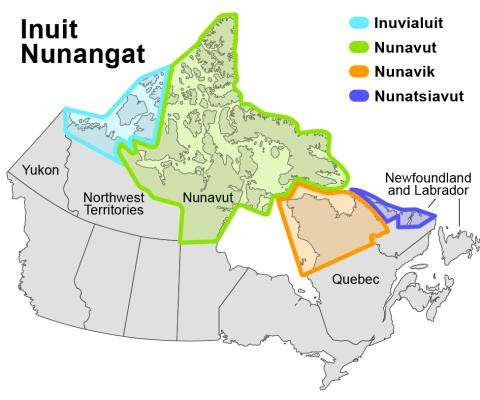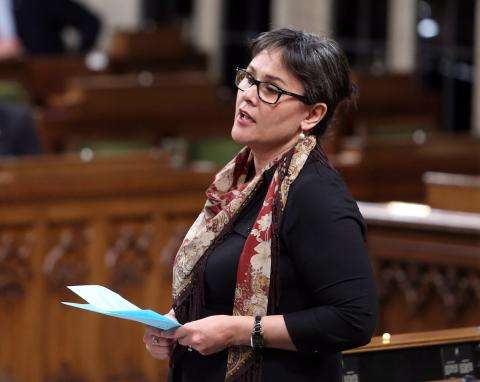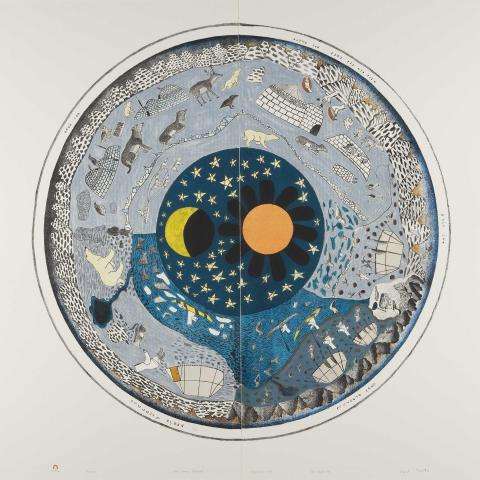Context card
| Context card | Inuit are a distinct Indigenous people whose homelands are in northern Canada. For thousands of years, they have governed themselves. Much of the Arctic, where Inuit live, became part of Canada in the 1880s. Canadian law did not mention Inuit voting rights until the 1930s, when these rights were denied. Inuit got the right to vote in 1950. Since then, Inuit have signed land agreements with the federal government across four regions of the Arctic. These agreements created uniquely Inuit democratic systems that exist alongside provincial, territorial and federal systems. Today, Inuit are active in Canada’s elections and democracy. |
|---|
Activity cards
| 1880 | Canada expands its borders to include the Arctic lands where Inuit live. Inuit are not consulted about this change. In theory, Inuit may be entitled to vote, but the law is not clear. Inuit continue to govern themselves in their own ways. |
|---|
| 1934 | Parliament decides that Inuit are legally the same as First Nations peoples when it comes to voting. This means that Inuit are denied the right to vote. This is the first time Inuit are mentioned in Canadian election law. |
|---|
| 1946 | The federal presence in the Arctic increases. The government creates new Arctic communities. Federal services like post offices are now available. Here, the postmaster for the Eastern Arctic arrives at Pangnirtung. |
|---|
| 1950 | Parliament decides that the rights of Inuit and First Nations peoples are not the same after all. Inuit are granted the right to vote in federal elections. Inuit are not involved in this decision. |
|---|
| 1953 | Inuit vote for the first time in a federal election. Voting services are provided to about half of the Inuit communities in Canada. Here, returning officer Harry Nosworthy swears in Joe Millik as an election official in Labrador. |
|---|
| 1962 | In the federal election, voting services are now available to all Inuit. Voting materials are delivered to remote communities by ship, helicopter and even parachute. |
|---|
| 1979 | A new electoral district is created in what is now Nunavut. When a federal election is held, all three candidates are Inuit. The candidates are Tagak Curley, Abe Okpik and Peter Ittinuar, who is elected. |
|---|
| 1992 | Elections Canada starts providing voting information in Inuktitut. This first time is for a referendum. |
|---|
| 1999 | The Northwest Territories are divided and the new territory of Nunavut is created. In Nunavut, most people are Inuit. The circular style of the legislature reflects Inuit values. |
|---|
| 2005 | All four Inuit regions, known as Inuit Nunangat, now have formal land agreements with Canada. Canadian Inuit vote for leaders in their own Inuit regions. They also vote in elections at the federal, provincial or territorial, and municipal levels. |
|---|
| 2008 | Leona Aglukkaq is the first Inuk cabinet minister. She is elected in the riding of Nunavut and then appointed to be the federal Minister of Health. |
|---|
| From time immemorial to the present | For thousands of years, Inuit have governed themselves in their homelands. Traditionally, the heads of families took on different leadership roles. Today, leaders are elected. For Inuit, decision making has always involved building consensus. |
|---|



